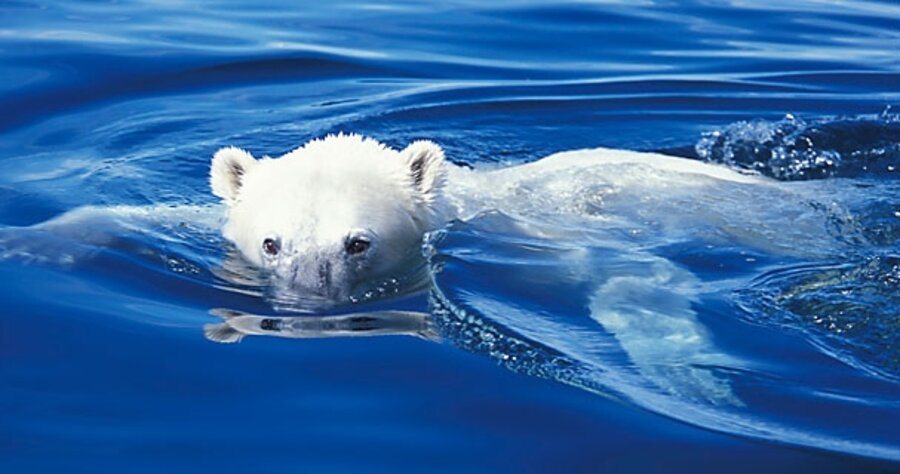Polar bears spotted swimming in open seas
Scientists patrolling the skies off Alaska's northwest coast say they observed nine polar bears swimming in open water, prompting some environmentalists to raise concerns about the species' survival in a warming world.
According to the Associated Press, the number indicates "an increase from previous surveys."
The bears were spotted on a flight over Alaska's Chukchi Sea by a federal marine contractor, Science Applications International Corp., that was looking for whales. The contractor was hired by the Minerals Management Service in advance of future offshore drilling for oil.
One of the bears was seen swimming at least 60 miles from the shore.
The WWF quotes Geoff York, the polar bear coordinator for the advocacy group's Arctic Programme, who says that polar bears that stray too far from land are at risk of drowning, especially if there is a storm.
“To find so many polar bears at sea at one time is extremely worrisome because it could be an indication that as the sea ice on which they live and hunt continues to melt, many more bears may be out there facing similar risk,” he said.
“As climate change continues to dramatically disrupt the Arctic, polar bears and their cubs are being forced to swim longer distances to find food and habitat.”
The Arctic has been rapidly losing ice in recent years. In October 2007, the National Snow and Ice Data Center reported that the loss of ice "shattered all previous records." Currently, the NSIDC describes the ice extent as having "sharply quickened" in early August.
Polar bears use Arctic Ice as a platform for hunting, and sea-ice reduction forces them to swim longer distances.
The AP story quotes Steven Amstrup, senior polar bear scientist for the US Geological Survey in Anchorage, who says that the bears could have been on a patch of ice that broke up, forcing them to swim in search of land.
"The bears that had been on that last bit of ice that remained over shallow shelf waters, are now swimming either toward land or toward the rest of the sea ice, which is a considerable distance north," he said in an e-mail response to questions.
It probably is not a big deal for a polar bear in good condition to swim 10 or 15 miles, Amstrup said, but swims of 50 to 100 miles could be exhausting.
"We have some observations of bears swimming into shore when the sea ice was not visible on the horizon," he said. "In some of these cases, the bears arrive so spent energetically, that they literally don't move for a couple days after hitting shore."
In May, the United States Department of the Interior listed polar bears as threatened under the Endangered Species Act. It was the first species to be so listed as a result of global warming.
There are currently between 20,000 and 25,000 polar bears in the Arctic. Critics claim that these numbers have increased dramatically in the past four decades, saying that, during the 1960s, there were only about 5,000 bears.
This number likely originated from either a former New York Times reporter who says that he can no longer remember the source, or from a survey conducted in 1961 [PDF] by the Soviet Ministry of Agriculture.
While most scientists agree that the species is imperiled due to global warming, some regions are experiencing a population boom in polar bears. In March 2007, the Telegraph, a British daily, reported on a study saying that a region in eastern Canada saw numbers swell from 850 in the 1980s to more than 2,100. The story says that polar bear experts attribute the increase to conservation efforts, notably a ban on the hunting of harp seals, an important food source for the bears.





